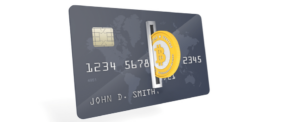Newcomers to the crypto space sometimes see Bitcoin (BTC) trading as a path to easy riches: just buy Bitcoin, trade it back and forth for a while, and then enjoy spending the awesome profits. The only problem with this exists in that pesky gap between the initial and profit phases.
The fact is that regular trading is really tough most of the time, and crypto trading can be even harder. Crypto markets are a lot more volatile and unpredictable than regular markets, after all. If you want to join the elite ranks of those six percent of traders who succeed over the long term, then you’re going to have to do a lot of work and research to resolve the question marks around trading.
This article is intended to help you get up to speed with the important basics needed to stand a chance in the crypto markets. It should not be construed as financial advice by any means; investing in anything is a risk, and as trading is such a vast and complex subject, the following should be considered as the merest tips of the icebergs of deeper knowledge and experience required for ultimate trading success.
Bitcoin Trading Tips for Beginners
1. Only trade with disposable income
You’ve probably heard it before but it bears repeating: only trade with money you can afford to lose. Chances are, if you’re new to Bitcoin trading, you probably will lose your money. Consider such losses as “school fees,” necessary dues to pay if you want to learn how to trade. Though you can still mitigate your losses so that a single adverse move doesn’t wipe out your trading balance.
2. Decide what you’re willing to lose
As most trades are essentially a bet on the price going either up or down, expect to be wrong about half the time. One of the keys to profitability in such an unpredictable environment is to let your winning trades run, but cut all losing trades short. Before making a trade, determine the point at which you’ll admit that your market view was mistaken.
If you buy Bitcoin thinking it will go up, and then the price drops below the point you’ve determined, it’s time to sell. Make your plan and, more importantly, stick to your convictions!
3. Find the Right Position Size
It takes money to trade, obviously, but it also costs money. There are transaction or banking fees necessary to make your initial buy, plus exchange fees on most trades, and there are often withdrawal fees too. Your trading profits will have to cover all these various deductions, as well as the biggest cost of all; your time.
These costs mean that you need to arrive at a trade position of optimal value. Your trading position should be large enough that your winning trades are able to offset all the associated expenses, making the overall effort worthwhile. However, you shouldn’t trade so large that the very real possibility of a loss unnerves you.
Each trader will have to find their own magic number for trade size; a number that fits both their budget and psychology. In some cases, the correct trade size will exceed your ability to trade with disposable income, as per point 1. In that case, you should consider whether your finances truly allow you to trade.
4. Make and Stick with a Plan
There are countless ways to look at markets, broadly separable into the categories of technical, fundamental, and sentiment analysis. Whichever approach you select – and you can certainly combine them – you must be able to implement your market view into actionable steps. In other words, reduce the complexity and unpredictability of the BTC market down to simple actions which you can reliably execute.
For example: if the price is below the Mayer Multiple but the weekly MACD indicator is positive, then buy Bitcoin.
Once you’ve developed a workable system, it’s essential to backtest it to see how it performs against historical market data. Unprofitable strategies should naturally be discarded in favor of profitable ones. You may also find that the remaining trading system is only profitable during certain market conditions, such as a trending or non-trending phase. In that case, further work is needed to identify market phases and, if you so wish, to develop additional strategies suitable for all possible phases.
After backtesting, the next step is simulated Bitcoin trading. Track how your strategy performs in current market conditions without risking any real money. Doing so will give you build up your confidence in your system, allowing you to execute its actions without hesitation when real money is on the line.
Don’t underestimate the psychological difficulty of sticking to your system when money is in play; greed and fear can impact your ability to execute according to plan. Building up the necessary self-discipline to trade as your system demands regardless of your emotions is vital.
5. Maintain a Trading Diary
Always document each and every trade you make. Although most trading platforms will record the date, time, direction, and amount of your trade, what they can’t capture is how the trade fit with your system’s signals, the state of the market as you perceived it, or your state of mind at the time of the trade. A Bitcoin trading diary (or better, spreadsheet) will also allow you to record the result of each trade and really drill down into the details. Over time, recording and analyzing this information will enable to identify your own tendencies and improve your trading accordingly.
6. Compare Your Trading Results against Buy and Hodl
The Buy and Hodl strategy, or making a long-term investment, is usually recommended for newcomers to the crypto markets. Simply stated, this strategy advocates that you buy Bitcoin (ideally when the price is low) and then simply hold it for long enough to realize the profit. As BTC has thus far shown a tendency to appreciate in value over time, holding it over the long term may be the easiest way to gain profit in the market. All that’s required is patience and a degree of trust that Bitcoin’s fundamental value will lead to future price appreciation.
By comparison, trading is a lot harder, more stressful, and often far less profitable than the holding strategy. Trading is also more expensive, given all the trading costs. Trading is also less safe, as it requires you to keep your funds on an exchange most of the time, rather than safely in your personal wallet or bank.
Unless your results are reliably more profitable than buy and hodl, you should consider whether Bitcoin trading is worth the time and aggravation. After all, time and money invested into trading could be put towards work with a guaranteed monetary return. Even when profitable, trading has definite opportunity costs which must be contrasted against the simple approach of “buy Bitcoin and hodl it until moon.



